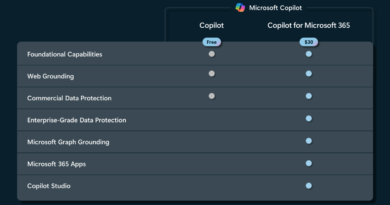8 web3 gaming experts discuss hurdles and opportunities in the road to wider adoption
The web3 gaming world has been a work in progress for a handful of years now. Studios in the space have found it difficult to gain Web 2 gamers’ trust and get over the image issues resulting from the “play-to-earn” era, and traction has been slower than predicted. So, what will it take to spur more mainstream gamers to pick up and play web3 games?
Amid the ongoing crypto bear market, investors and startups alike are diving deeper into the emerging space to answer that very question (among others) as they look to web3 gaming to bring in the next wave of users to crypto and the wider web3 industry.
So to find out how the industry is thinking about the next phase of growth in web3 gaming, we spoke to eight people with strong track records in the industry about the future of the space, how they’re tackling challenges and more.
For Ed Chang, head of gaming at Ava Labs, the web3 industry is still arguably young, but he’s hopeful that there’s space for web3 elements to be complementary to the gaming experience and add value. “We believe that all games can leverage blockchain elements, whether it’s truly owning your items, earning rewards for playing, or building payment rails for microtransactions, creators and modders,” he said.
We’re widening our lens, looking for more founders and investors to participate in TechCrunch+ surveys, where we poll top professionals about challenges and opportunities in their industry.
If you’re a founder or investor and would like to participate in future surveys, fill out this form.
However, several of these people noted that web3 gaming still has some pretty difficult hurdles to overcome before it can go mainstream.
“The biggest challenge is that we are still figuring out how to design web3 games and deciding as an industry if we would rather prioritize the “play” or the “earn” part,” Tiffany Dong, senior associate for gaming at Solana Foundation, said.
The very obvious UX (user experience) problem with web3 is also something that’s being worked on. Robbie Ferguson, co-founder and president of Immutable, said, “Most web3 services expect the user to set up a new wallet and connect it with their platform. This already includes multiple steps of inconvenience that open up the door to catastrophic loss if not done correctly. Then there’s the fact that this process usually has to be done repeatedly for each service.”
Still, the industry appears to be learning quickly. Dong pointed out a notable shift, where web3 game developers are focusing on building games that are engaging and fun for the community first, and complementing the experience with blockchain technology without using it to define it.
As for the play-to-earn model, it appears to be on the way out. Carlos Roldan, CEO and founder of Elixir Games, noted that the term was “widely misused,” especially in the context of Ponzi and pyramid schemes that capitalized on the trend.
“This misuse took advantage of the play-to-earn trend that was particularly hot during 2021–2022. Post-trend, the term has become almost obsolete, and the industry is shifting toward more accurate descriptors like ‘play to own,’ ‘play and earn,’ or ‘win to earn,’ which better align with the true gaming experience. I’ll stick with ‘play to enjoy’ if I have a choice,” he said.
Read on to find out which regions are leading in the race for adoption, how games could gain traction and stand out, as well as more interesting insights into the challenges and opportunities for web3 games in the near future.
We surveyed:
- Chris Akhavan, chief gaming officer, Magic Eden
- Tiffany Dong, senior associate for gaming, Solana Foundation
- Ed Chang, head of gaming, Ava Labs
- Carlos Roldan, CEO and founder, Elixir Games
- Michael Wagner, co-founder and CEO, Automata (developer of Star Atlas)
- Urvit Goel, head of global business development, Polygon Labs
- Robbie Ferguson, co-founder and president, Immutable
- John Linden, CEO, Mythical Games
Chris Akhavan, chief gaming officer, Magic Eden
How big is the web3 gaming market today? And what metric do you think works best to track growth?
Web3 gaming is still in a nascent stage. The industry had an initial wave in 2021 with the play-to-earn model. That model, unsurprisingly, was not sustainable, but it did get game developers and investors excited about opportunities in web3 gaming.
We are now in a quiet period, as many studios that formed and raised funding back then are building games. I expect the market to remain largely quiet until some of these second-wave web3 games start to launch next year.
Metrics to track will be largely the same that any game tracks: installs, DAU, retention, LTV, etc. In addition to that, we’ll be tracking web3-specific KPIs such as wallet and marketplace metrics.
What is the one-liner you’d use to bring on board people who might be interested — or skeptical — about web3 gaming?
Hang tight. The pipeline of games in development is looking great — MapleStory, Eve Online, Limit Break, Azra, Shrapnel, Wildcard, Zynga, and many others are deep into development with awesome games.
What are the biggest challenges web3 gaming is facing in terms of adoption from both gamers and traditional gaming studios?
Right now, it’s the reality of the long time it takes to build a high-quality game. The industry needs to remain patient while studios build the next wave of web3 games.
What do you predict will happen to the play-to-earn model over time? What other web3 gaming elements will the industry shift toward?
Play-to-earn has faded away. You cannot have a functional economy where everyone expects to extract value. The industry has shifted to gameplay that’s enhanced by web3 ownership and economic alignment between gamers and developers.
What types of web3 games do you think will see the most adoption going forward? How have your expectations changed over time?
All the genres that work in traditional gaming can benefit from web3 ownership, but in particular, the core genres with deep economies [will benefit more]. That’s always been my expectation since getting into the web3 space a few years ago.
What advice would you give other gaming developers for gaining traction and standing out in this space?
The hype era of pre-selling NFTs and tokens for games that aren’t live yet is past. At this point, it’s imperative to focus on shipping an amazing game that people will want to play.
How could traditional and web3 gaming studios work together more closely?
Regardless of web2 or web3, game developers have always been good about sharing knowledge, data, and case studies with each other. I think that applies across these two segments as well.
Which regions or countries will be at the forefront of web3 gaming adoption in the next five years? Where will it take time to gain traction?
Asia looks to be leading the charge in web3 gaming investment. Game studios in Korea and Japan are particularly leaning into web3. Similar to free-to-play, I think Asia will be where web3 models are proven, and then they’ll eventually be adopted by western markets.
Tiffany Dong, senior associate for gaming, Solana Foundation
How big is the web3 gaming market today? What metric do you think works best to track growth?
Compared to the multi-billion-dollar games industry, the web3 gaming market is still new. However, the growth potential is quite high, and we’ve seen that crypto games can have explosive user and activity growth. As web3 gaming matures and games move past the classic “play-to-earn” model, we’re bullish on the future of the industry.
There are two important groups of metrics to track growth: number of players and the level of activity from those players. Daily, weekly, and monthly average users, the number of unique wallets and the number of on-chain transactions paint a clear picture of a game’s momentum and the level of excitement in the community.
What is a one-liner you’d use to bring on board people who might be interested — or skeptical — about web3 gaming?
You channel so much time, attention, and money into the games you play — web3 offers the chance for the fruits of your fun to be truly yours.
What are the biggest challenges web3 gaming is facing in terms of adoption from both gamers and traditional gaming studios?
The biggest challenge is that we are still figuring out how to design web3 games and deciding as an industry if we would rather prioritize the “play” or the “earn” part. Now we’re seeing a shift where web3 game developers are focusing on building a game that is engaging and fun for the community first, and complementing the experience with blockchain technology without using it to define it.
Web3 also faces a few key UX challenges, like wallet onboarding and fiat on-and-off-ramping. While gaming may be the path to onboarding the next billion users to web3, there is still some education that’s required to fully participate in the space. Players shouldn’t need to open an exchange account just to participate in an in-game economy.




